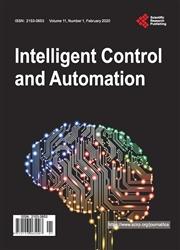Performance Analysis of Grid Connected and Islanded Modes of AC/DC Microgrid for Residential Home Cluster
引用次数: 2
Abstract
This paper presents performance analysis on hybrid AC/DC microgrid networks for residential home cluster. The design of the proposed microgrid includes comprehensive types of Distributed Generators (DGs) as hybrid power sources (wind, Photovoltaic (PV) solar cell, battery, fuel cell). Details about each DG dynamic modeling are presented and discussed. The customers in home cluster can be connected in both of the operating modes: islanded to the microgrid or connected to utility grid. Each DG has appended control system with its modeling that will be discussed to control DG performance. The wind turbine will be controlled by AC control system within three sub-control systems: 1) speed regulator and pitch control, 2) rotor side converter control, and 3) grid side converter control. The AC control structure is based on PLL, current regulator and voltage booster converter with using of photovoltaic Voltage Source Converter (VSC) and inverters to connect to the grid. The DC control system is mainly based on Maximum Power Point Tracking (MPPT) controller and boost converter connected to the PV array block and in order to control the system. The case study is used to analyze the performance of the proposed microgrid. The buses voltages, active power and reactive power responses are presented in both of grid-connected and islanded modes. In addition, the power factor, Total Harmonic Distortion (THD) and modulation index are calculated.住宅小区交直流微电网并网与孤岛模式性能分析
本文对用于住宅集群的交直流混合微电网进行了性能分析。拟议的微电网设计包括综合类型的分布式发电机(dg)作为混合电源(风能,光伏(PV)太阳能电池,电池,燃料电池)。介绍并讨论了每个DG动态建模的细节。家庭集群中的客户可以以两种运行模式连接:孤岛到微电网或连接到公用电网。每个DG都附加了控制系统及其建模,将讨论控制DG性能。风力发电机将由交流控制系统控制,分为三个子控制系统:1)调速器和螺距控制,2)转子侧变流器控制,3)电网侧变流器控制。交流控制结构以锁相环、稳流器和升压变换器为基础,利用光伏电压源变换器(VSC)和逆变器接入电网。直流控制系统主要是基于最大功率点跟踪(MPPT)控制器和升压变换器连接到光伏阵列块和来控制系统。通过实例分析了所提出的微电网的性能。给出了并网模式和孤岛模式下母线电压、有功功率和无功功率的响应。此外,还计算了功率因数、总谐波失真(THD)和调制指数。
本文章由计算机程序翻译,如有差异,请以英文原文为准。
求助全文
约1分钟内获得全文
求助全文

 求助内容:
求助内容: 应助结果提醒方式:
应助结果提醒方式:


